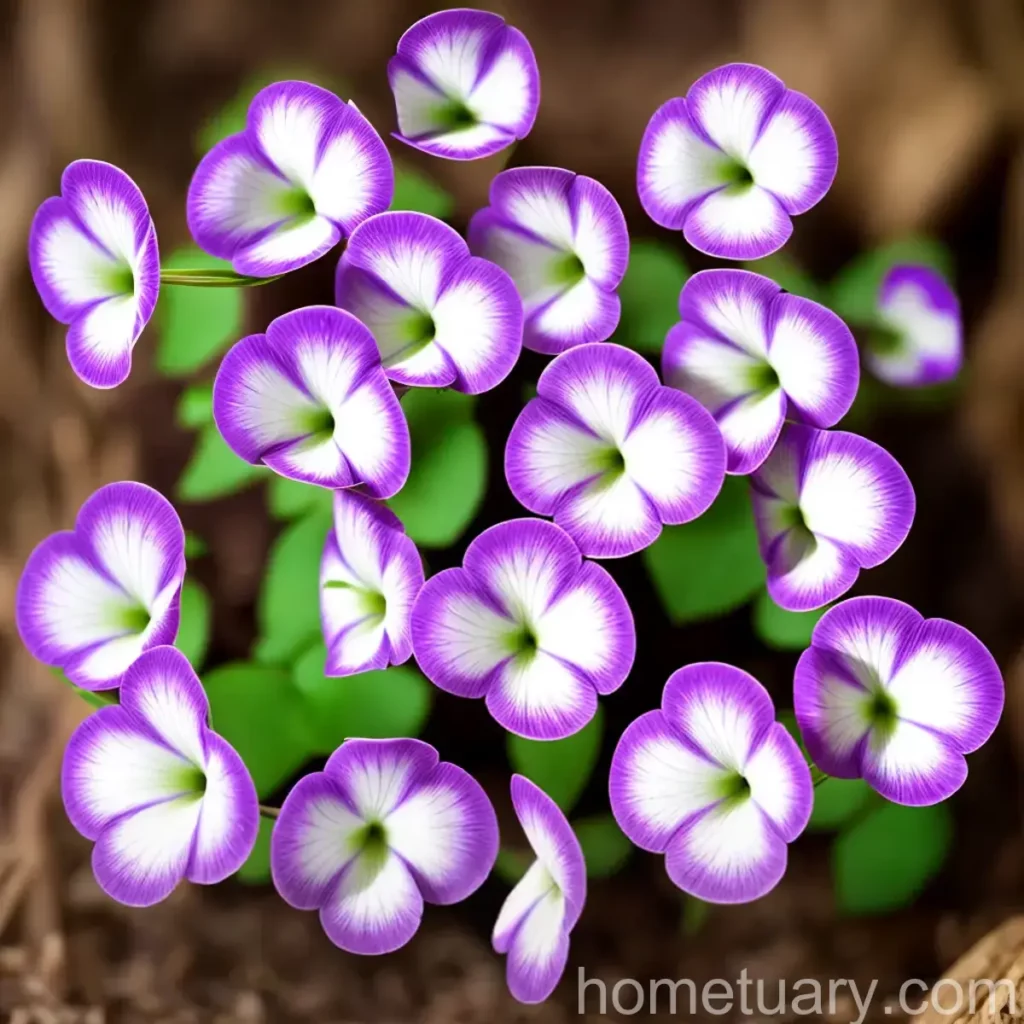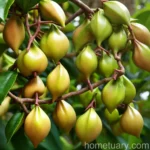Violet Wood Sorrel (Oxalis Violacea): A Plant Scientist’s Guide
Welcome to this comprehensive guide to the violet wood sorrel (Oxalis violacea) – a unique and beautiful plant that has captured the interest of plant enthusiasts and horticulturists. In this article, we will delve into the key aspects of understanding, cultivating, and caring for this stunning plant.
What is Violet Wood Sorrel (Oxalis Violacea)?
Violet wood sorrel, scientifically known as Oxalis violacea, is a delicate and charming perennial plant that belongs to the genus Oxalis, which encompasses hundreds of species. This particular species is characterized by its distinct violet-colored leaves and dainty pink to violet flowers. It is native to the southeastern part of the United States and is often grown for its ornamental value.
Key Takeaways – Violet Wood Sorrel (Oxalis Violacea)
Before we dive into the specifics of caring for the violet wood sorrel, let’s take a quick look at the key takeaways:
- Scientific Name: Oxalis violacea
- Common Names: Violet shamrock, violet wood sorrel
- Plant Type: Perennial
- Light Requirement: Partial to full shade
- Watering: Moist, well-draining soil
- Soil Type: Rich, organic soil
- Blooming Season: Spring to early summer
- Propagation: Division, seeds
- Common Diseases: Fungal infections, rust, leaf spot
- Common Pests: Aphids, spider mites
Now that we have a snapshot of what the violet wood sorrel is all about, let’s explore the intricate details of its culture, care, and maintenance.
Culture
Understanding the cultural requirements of the violet wood sorrel is fundamental to ensuring its successful growth and development. Let’s explore the various aspects that contribute to its cultural needs.
Uses
Violet wood sorrel is primarily grown for its ornamental value. Its attractive foliage and delicate flowers make it a popular choice for shaded gardens, woodland borders, and container plantings. Additionally, some gardeners appreciate its edible leaves, which can add a zesty flavor to salads and culinary dishes.
Water
When it comes to watering the violet wood sorrel, it is essential to maintain consistent moisture without allowing the soil to become waterlogged. Regular, moderate watering is recommended, particularly during dry periods. However, it is crucial to ensure that the soil is well-draining to prevent waterlogging, which can lead to root rot and other moisture-related issues.
Sunlight
Violet wood sorrel thrives in partial to full shade conditions. It is well-suited for shaded areas of the garden or spaces with dappled sunlight. Exposure to direct, intense sunlight can cause leaf scorching and diminish the plant’s overall vigor.
Fertilizer
When it comes to fertilizing violet wood sorrel, a balanced, organic fertilizer can be applied in the spring to support healthy growth and flowering. It is important to follow the recommended application rates and avoid excessive fertilization, which can lead to an imbalance in nutrient levels and potentially harm the plant.
Soil
The violet wood sorrel prefers rich, well-draining soil that is high in organic matter. A slightly acidic to neutral pH range is ideal for optimal growth and performance. Amending the soil with organic compost can improve its structure and nutrient content, creating a favorable environment for the plant.
Pruning
Pruning the violet wood sorrel is primarily focused on the removal of dead or damaged foliage and spent flowers. This practice helps maintain the plant’s appearance and reduces the risk of disease. Additionally, periodic grooming can help manage the plant’s size and shape, promoting a tidy and attractive growth habit.
Propagation
Violet wood sorrel can be propagated through division or from seeds. Division is a common method that involves separating the plant into smaller sections, each with its own roots and shoot system. Seeds can also be collected from mature plants and sown to produce new seedlings. Both methods offer opportunities for increasing the plant population and introducing new specimens to the garden.
Container Popularity
Due to its compact size and ornamental appeal, violet wood sorrel is well-suited for container gardening. It can be grown in pots, hanging baskets, or other suitable containers, adding a touch of charm to patios, balconies, and indoor settings.
Common Diseases
While the violet wood sorrel is relatively resilient, it can be susceptible to certain diseases, particularly in conditions of high humidity and poor air circulation. Common diseases that may affect the plant include fungal infections, rust, and leaf spot. Proper cultural practices, such as ensuring good air circulation and avoiding overhead watering, can help prevent the onset and spread of these diseases.
Disease Diagnosis
Diagnosing and addressing plant diseases requires keen observation and an understanding of the typical symptoms associated with each condition. Symptoms such as wilting, discoloration, spots on leaves, and abnormal growth patterns can indicate the presence of a disease. By identifying the specific symptoms and patterns, gardeners can take appropriate measures to manage and control the disease effectively.
Common Pests
Pests such as aphids and spider mites are among the potential threats to the health of violet wood sorrel. These pests can cause damage by feeding on the plant’s sap, leading to stunted growth, leaf discoloration, and overall decline. Vigilance and early intervention, such as through the use of organic insecticidal soaps or horticultural oils, can help manage pest infestations and protect the plant from significant damage.
Botanist’s Tips
As a plant scientist, I would like to share the following tips for enthusiasts and cultivators of violet wood sorrel:
- Ensure Adequate Drainage: It is essential to provide well-draining soil and adequate drainage to prevent waterlogging, which can compromise the plant’s health.
- Monitor Moisture Levels: Regularly monitor the soil moisture to maintain an optimal balance. Avoid allowing the soil to dry out excessively or become waterlogged.
- Inspect for Pests and Diseases: Routinely inspect the plant for signs of pests and diseases, addressing any issues promptly to prevent escalation.
- Consider Companion Planting: Pair violet wood sorrel with compatible companion plants that share similar cultural requirements, creating a harmonious and visually appealing garden setting.
- Prune with Care: When pruning, use clean, sharp tools to make precise cuts, promoting the plant’s health and minimizing the risk of injury or disease transmission.
Fun Facts
To shed light on the intriguing aspects of violet wood sorrel, here are some fun and fascinating facts about the plant:
- Edible Leaves: The leaves of violet wood sorrel are not only ornamental but also edible, adding a tangy and refreshing flavor to culinary creations.
- Shamrock Symbolism: Due to its three-parted leaves, the violet wood sorrel is often associated with the symbolism of shamrocks and is considered a token of good luck.
- Nocturnal Blooming: Some species of Oxalis, including the violet wood sorrel, have the unique characteristic of closing their flowers at night and opening them again during the day, adding to their mystique and allure.
- Historical Uses: Throughout history, certain species of Oxalis have been utilized for various medicinal purposes, although it is essential to exercise caution and consult reliable sources before exploring any potential medicinal applications.
Links to External Resources
To further expand your knowledge and explore additional information about violet wood sorrel, consider the following external resources:
- The American Violet Wood Sorrel Society
- Botanical Illustrations and Descriptions
- Horticulture and Ornamental Plant Research Center
- The Joy of Gardening: Growing and Caring for Violet Wood Sorrel
In conclusion, the violet wood sorrel (Oxalis violacea) is a captivating plant with a wealth of ornamental and horticultural appeal. By understanding its cultural needs, implementing appropriate care practices, and appreciating its unique characteristics, enthusiasts and horticulturists can enjoy the beauty and charm of this distinctive plant.
References
- University of Florida, Institute of Food and Agricultural Sciences. (2021). Oxalis violacea. Link
- North Carolina State University Extension Gardener Handbook. (2019). Violet Wood Sorrel. Link
- Missouri Botanical Garden. (n.d.). Oxalis violacea. Link
- Royal Horticultural Society. (2021). Oxalis violacea. Link















